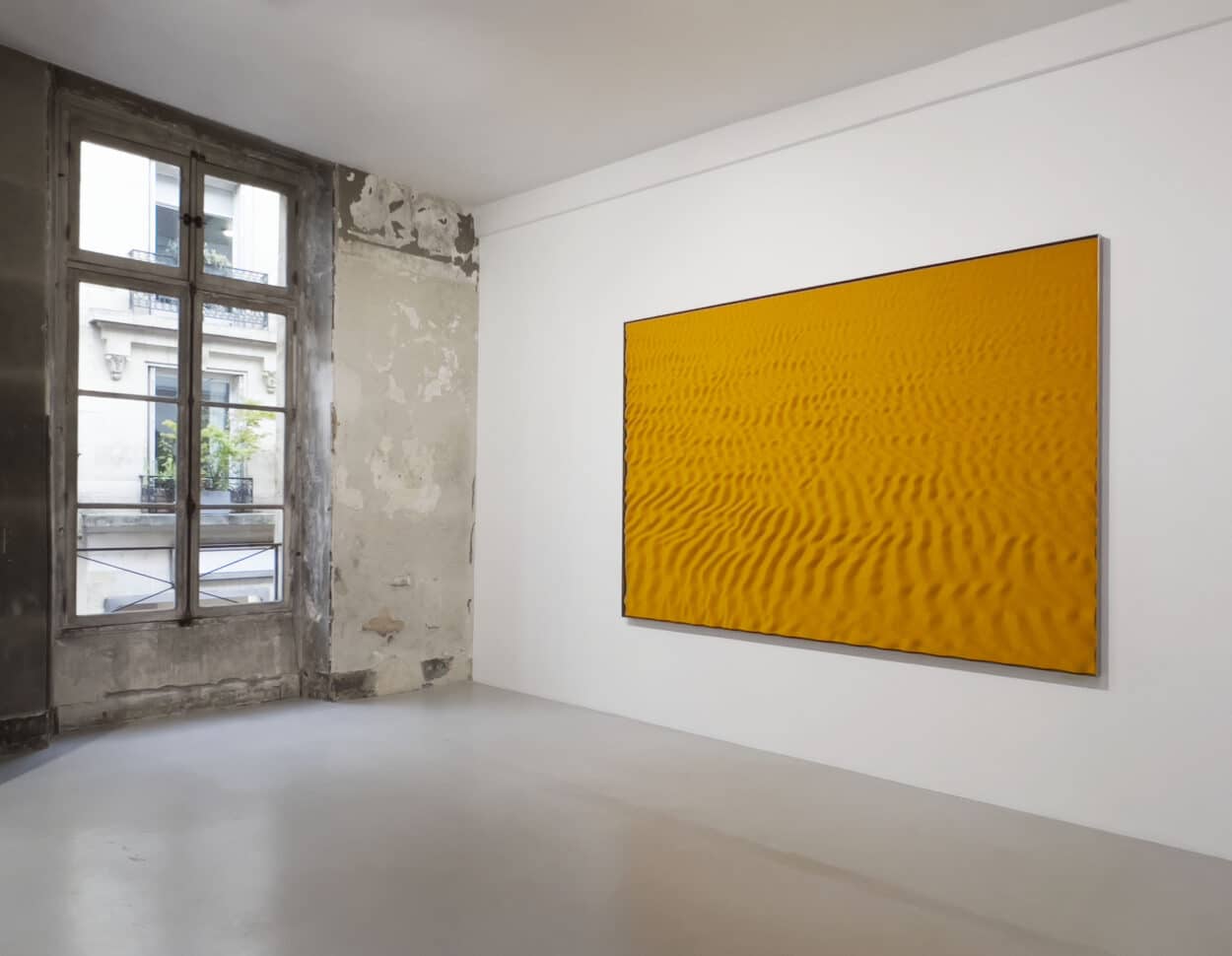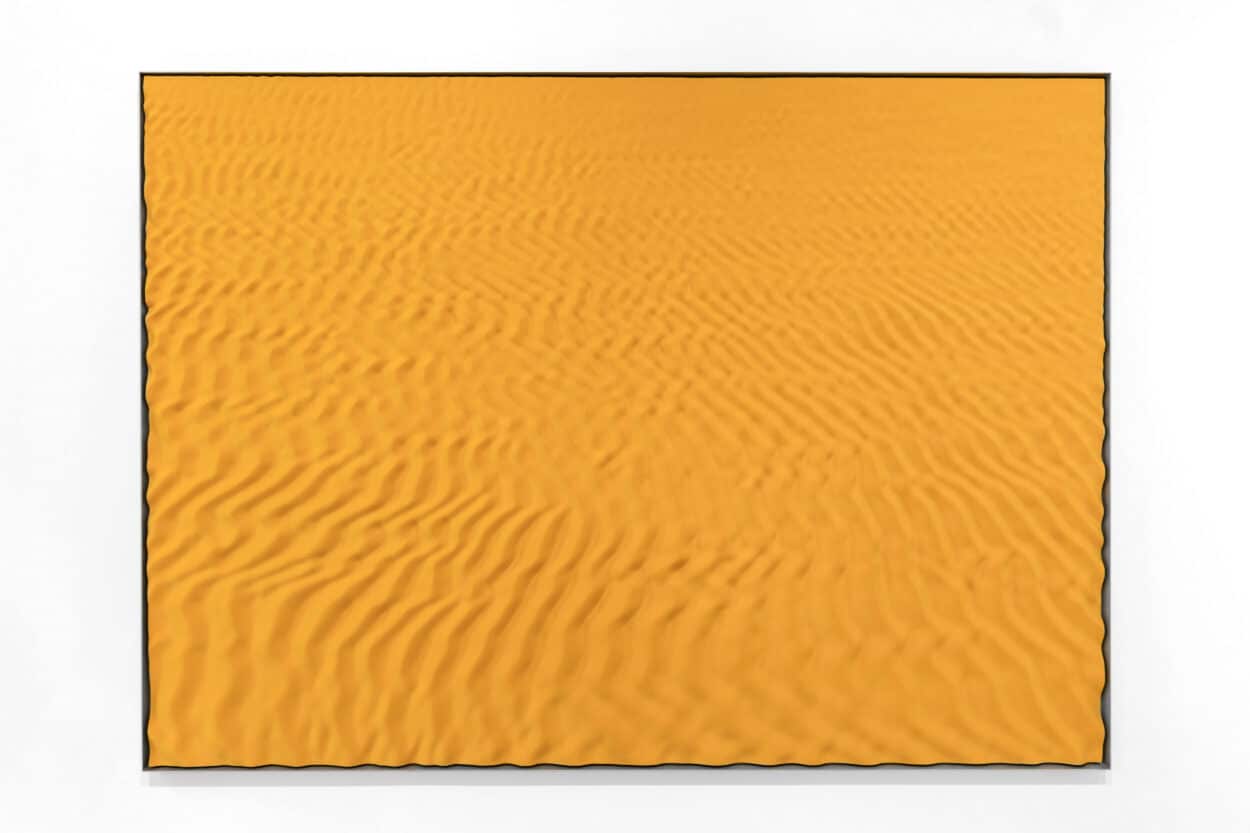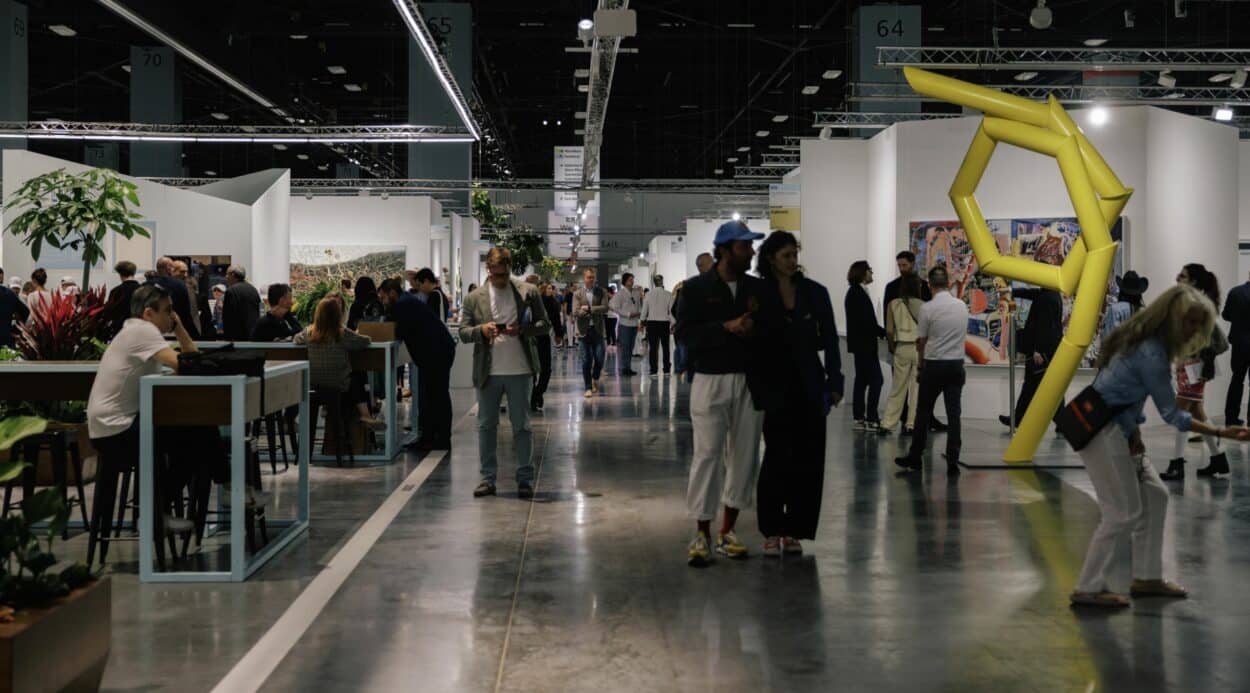At Miami Art Basel 2023, artists defy Eurocentric norms, employ diverse materials, and engage with themes of identity and colonial legacies, shaping a vibrant and evolving art scene that challenges conventions and contributes meaningfully to societal conversations.
December 8 – 10—Yes, it is possible to find twin themes in the contemporary art and design worlds at Miami Art Basel. This annual event features a host of sprawling shows with markedly different agendas that are dispersed at various venues throughout the city. In parallel, the city welcomed Design Miami, one of the most prominent collectible design shows in the world, and a host of alternative exhibitions that provided more contemporary outlooks and more radical forms of expression.
We noted a recurring theme in the pieces displayed throughout the numerous events. Emerging artists are increasingly interested in exploring their ethnographic backgrounds, and they’re using materials and objects sourced from a particular physical place or culture to translate this. Examples from Design Miami and Untitled Art—an independent fair devoted to emerging artists, galleries, and non-profit spaces—included Color Field paintings, tapestries, and wall hangings that incorporate different materials ranging from industrial manmade substances to an array of natural ones such as shells and wood.
Miami Art Basel, NOVA: Ancestral Origins in Contemporary Artworks
At Miami Art Basel, in the NOVA section devoted to new work, The Ranch exhibited pieces from a series of assemblages by Puerto Rican sculptor Daniel Lind-Ramos. As the artist studied in New York, he made connections with Max Levai who operates an art consultancy firm in New York City, specializing in contemporary art. Following his education, the artist returned to his hometown in Puerto Rico to make pieces that relate to his origins. As Max Levai owns The Ranch, with a rich Native American history rooted in its land, the connection between artist and consultant expanded.

Located in an area of Long Island originally occupied by the Montaukett tribe, The Ranch is considered to be the longest-running cattle ranch in the United States and still operates as a training center and breeding site for competition-grade cutting horses. Visits from artists such as Andy Warhol, who also purchased nearby land, brought The Ranch closer to the art world. Now owned by Max Levai, visitors of The Ranch can enjoy ephemeral exhibitions.
The link between Lind-Ramos and The Ranch ties together ancestral history and notions of the past, a concept we’ve mentioned that is becoming more than prominent in pieces from contemporary artists. At NOVA, Lind-Ramos displayed a totemic-like figure composed of materials sourced from his rustic hometown that included a blue tarp, a section of a boat, pieces of rope, and a limb of a branch that looked like a leg. According to The Ranch’s curator, Max Levai, the work, which has been exhibited at New York City’s Museum of Arts PS1, is intended to call attention to the environmental degradation of the mangrove forests that the artist’s hometown village in large part depends upon for its sustenance.
Crafting a Native Tropical Vibe Through Matchbox Art
Carlos/Ishikawa curated a solo presentation of work by Brazilian artist Antonio Tarsis for Art Basel Miami Beach. The artist composed his sculptural wall hangings out of an intricate grill of textured balsa wood from matchboxes that overlay tiny colorful pieces of paper, creating a native tropical vibe. The artist has been working with this technique since he started artistic practices at age 14.
Antonio Tarsis embarked on this series by gathering discarded matchboxes strewn about the streets of Salvador, Brazil, establishing a poignant connection with his hometown and country. These matchboxes, bearing the logo of a popular brand ubiquitous in Brazilian households, serve as a tangible link to the artist’s cultural roots. In Salvador, where these everyday items are prevalent, especially in areas grappling with drug dependency, Tarsis creates a canvas imbued with socioeconomic narratives.
Beyond their utilitarian function, these cast-off matchboxes, more affordable than lighters, become the raw material for Tarsis’s artistic expression. Hand-assembled yet mass-produced, these objects possess a unique materiality that responds dynamically to environmental exposure, capturing imprints of sunlight and water. Tarsis, attuned to the inherent symbolism and hues of the boxes, deftly reconfigures, aligns, and accentuates their components. In doing so, he orchestrates collages that transcend the mundane, resulting in evocative compositions reminiscent of paintings, landscapes, or abstractions.
Through this creative process, Tarsis weaves a narrative that resonates with the cultural fabric of Salvador and the broader context of Brazil. The matchboxes, once overlooked remnants of daily life, now serve as a means for the artist to explore and express the complexities of his hometown and country, infusing his work with layers of meaning and connection.
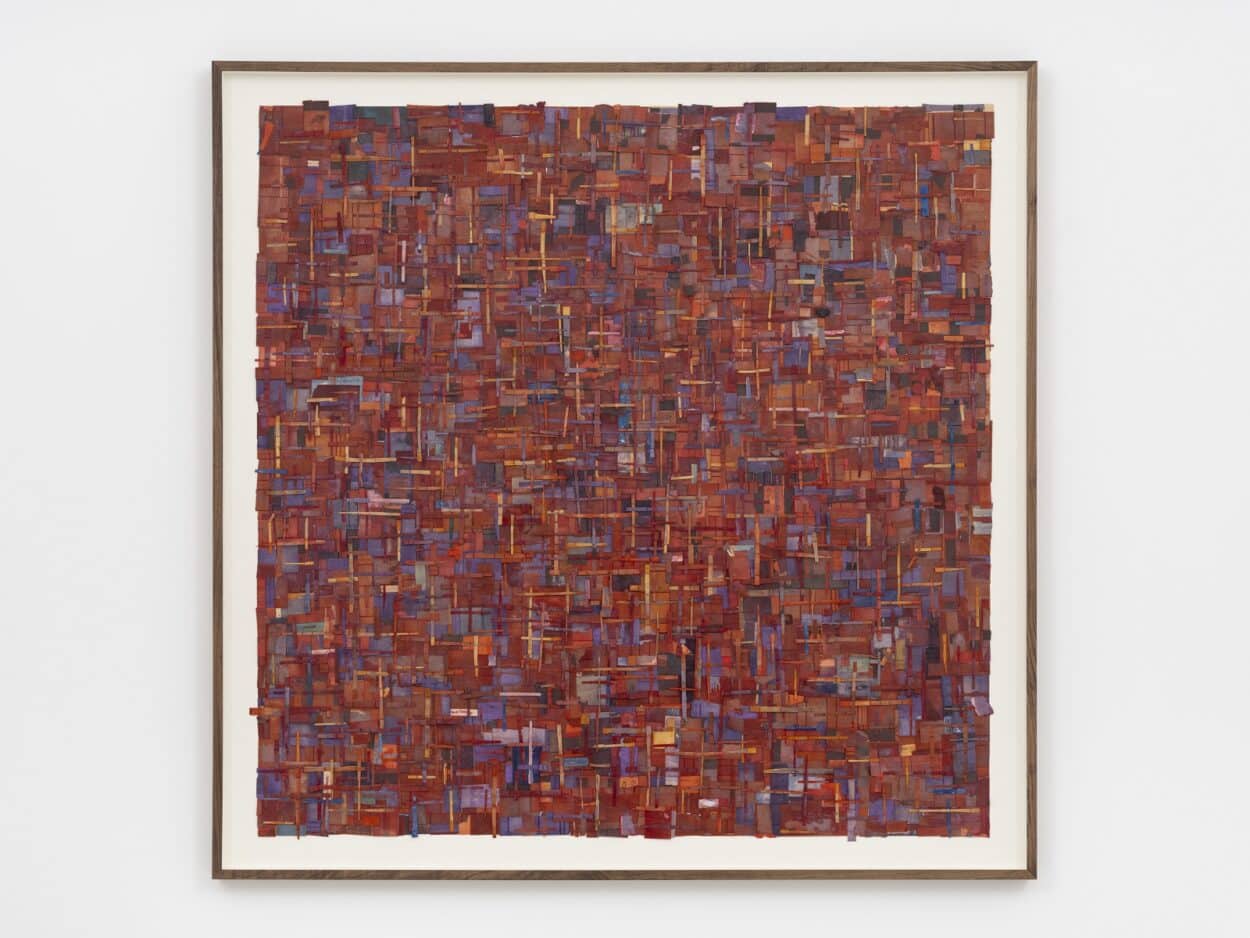
Untitled, 2023
Guarany Fósforos de Segurança matchbox
balsa wood, paper & coal. Courtesy of Carlos / Ishikawa.
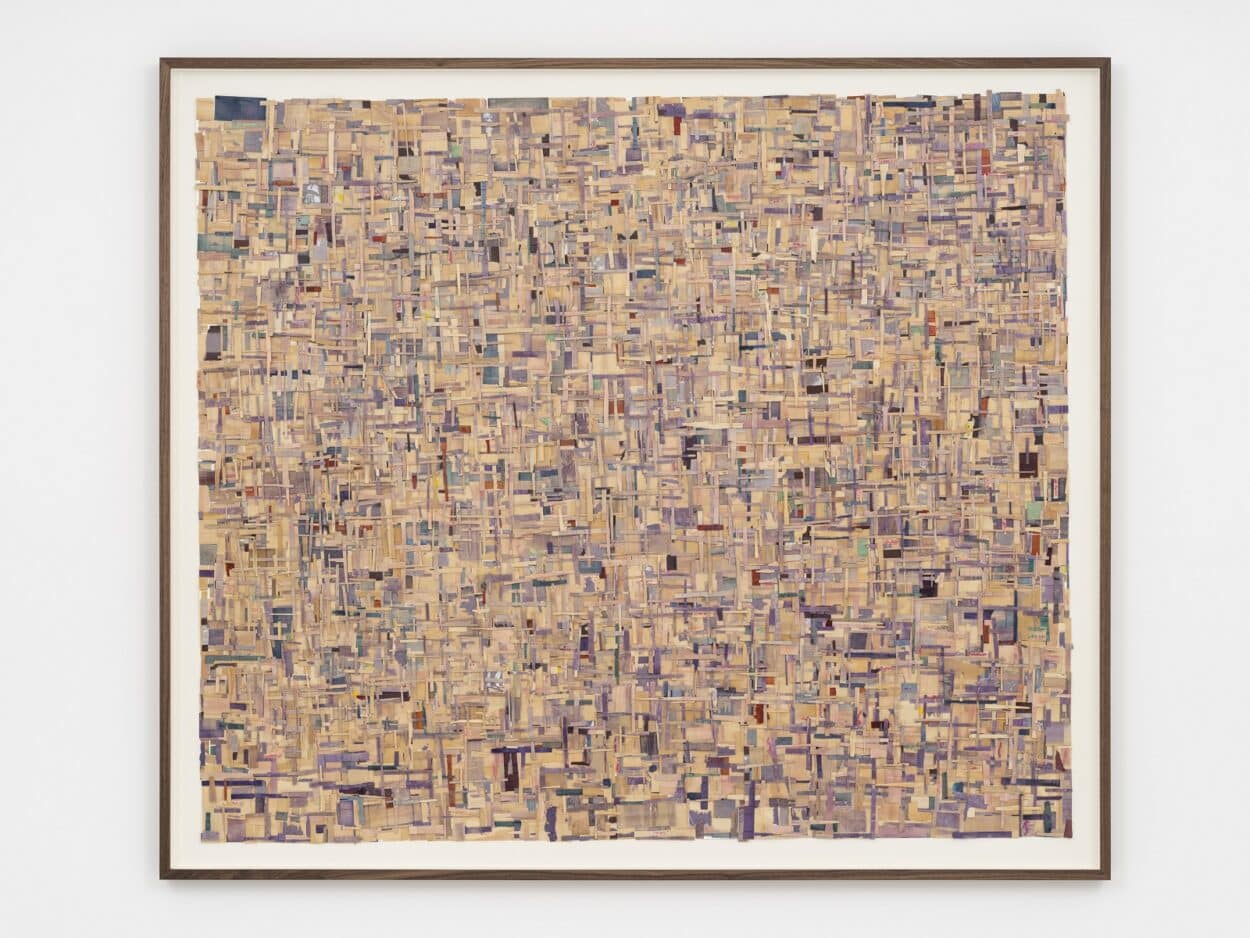
Untitled, 2023
Guarany Fósforos de Segurança matchbox
balsa wood and paper. Courtesy of Carlos / Ishikawa.
A Glowing Golden Landscape by Loris Cecchini
Another artist whose interest in repurposed materials matches that of Antonio Tarsis, Loris Cecchini exhibited one of his recent projects entitled Aeolian Landforms. The expanse of desert sand and the glowing golden landscape appeared to be, in our view, one of the most sensuous natural scenes displayed. The work composed of acrylic resin, polyester resin, and nylon fiber was yet another example of how industrial types of materials can be transformed to create a compelling naturalistic image.
In his projects “Aeolian Landforms” and “μgraph reliefs,” Loris Cecchini explores color as a newfound energy source. The interplay of light and shadow on the relief waves showcases surface tension, giving rise to a novel material expression. Waves, whether in the electromagnetic spectrum, sonic vibrations, or water ripples, profoundly influence our lives. Cecchini aligns the reshaping of surfaces with digital architectures, sharing shapes to generate materiality. This work exemplifies how the digital realm can transform surface conditions, challenging flatness and propelling the surface into dynamic motion. It pushes the surface to its limits, making it the core and structure of the artwork.
This year’s events reflect a dynamic shift in contemporary art. Artists are rejecting Eurocentric norms, embracing diverse materials over traditional ones, and engaging with themes of identity and colonial legacies. The use of craft signals a return to hands-on techniques, while the celebration of diverse cultural perspectives is evident in works exploring identity and places of origin. The incorporation of industrial materials blurs art-world boundaries, highlighting artists’ desire to address contemporary issues. Together, these trends depict a vibrant and evolving art scene that challenges norms and contributes meaningfully to societal conversations on identity, history, and the intersection of art and culture.

